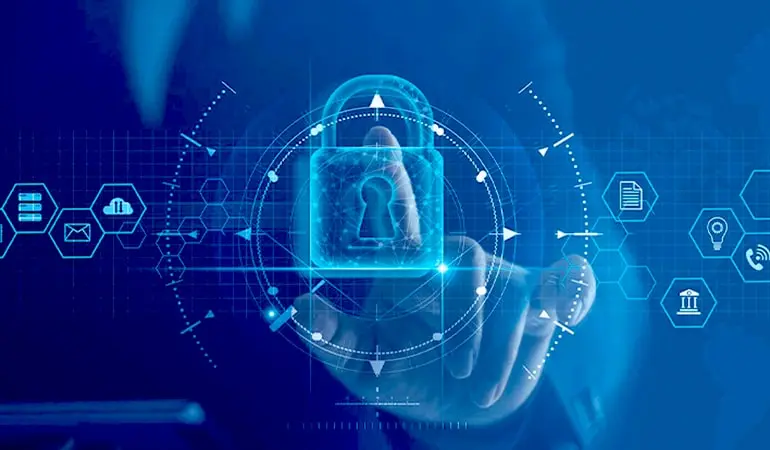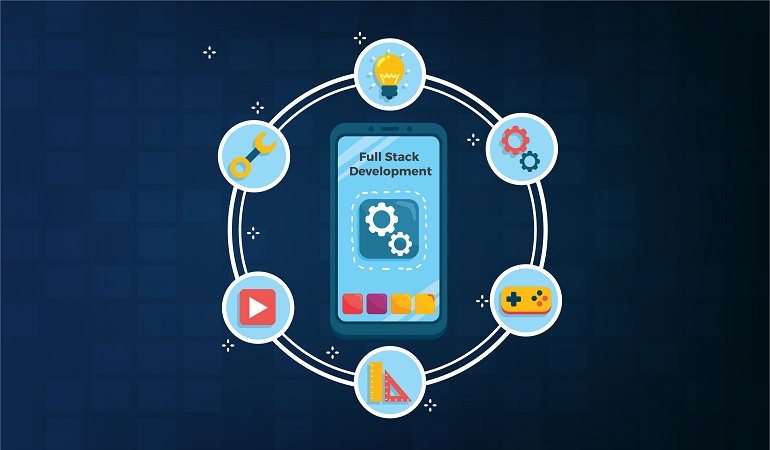The need for technological solutions to cater to security threats in the business world is inevitable. Technology impacts the way businesses run and carry out their processes. Modern advancements in science and technology provide substantial relief to commonly occurring security issues. Cybersecurity concerns are not restricted to a particular organization. Even the smallest companies suffer from security vulnerabilities.
Even in today’s world, many companies rely on paperwork and the physical dealing of assets. But even those are vulnerable to physical threats such as fire and theft. In case a company has correspondences, documents, files, and lots of paperwork, digitizing them would only secure them. Securing access to physical information has a higher possibility than accessing digital information. Digitization is mandatory because it does not allow easy access to the data, and physical threats cannot wipe the intellectual property and valuable information. Even if the devices were put on fire, there would be no worries.
The primary reason for the increasing security risks is the digitalization of data and extreme dependence on technology. Every day organizations become victims of data breaches, cyber-attacks, data losses, hacking, and phishing. Even advanced and giant enterprises experience these attacks. Cybersecurity issues and concerns are at the forefront of every enterprise.
They require concrete fortification of intellectual property and data to thrive. Companies struggle to find the right technological solution to these mounting issues. For example, data breaches are rampant nowadays despite many attempts by IT people. So, a good technological solutions like the cloud will definitely put a rest on all these issues.
Common Technological Solutions for Cybersecurity:
Today we shall discuss some of the common technology solutions and tips for cybersecurity and their importance in the business world.
1. Data loss prevention
From the apparent meaning of this term, we can deduce it means preventing data loss in the first place. For this purpose, a proper process is put into order which requires using modern technology to verify whether the data being sent out of the company is susceptible to breaches and losses. The data could be sensitive and confidential enough to be stolen and hinder business processes.
The technology puts the data under strict monitoring and surveillance to ensure that nothing valuable and confidential goes out of the company. During the monitoring process, emails, attachments, and any correspondence are studied closely to maintain the sanctity and security of data.
2. Intrusion detection system
IDS, or intrusion detection system, is a fascinating and interesting technology solution that helps in the detection of any outside interference in the system. The outside interference could have a malicious intention, so IDS stays alert at all times. The technology monitors traffic that enters the company through different routes to detect malicious and fraudulent intentions. An invader only enters the premises of your organization with the intention of stealing and hacking.
This tool is extremely useful because it raises alerts, notifies the system, and detects the intrusion in time if the intrusion has malicious nature. It also sends signals even if the traffic comes from an untrusted or unknown source. During the process, traffic coming into the system is put under strict monitoring to take preemptive measures before the theft or breaches even occur.
3. Intrusion prevention system
When looked at closely, these technological solutions represent a step-wise solution for monitoring, identification, and prevention of malicious activities within a system. An intrusion prevention system is a technology that is responsible for preventing intrusion by taking strict measures and actions against uninvited, untrusted, and suspicious traffic. After the IDS alerts the system of the intervention, the IPS takes preventive measures against the untrusted traffic source.

It ensures that enough security and protection blanket the network before malicious intruders or traffic reaches the system network. A part of the job and duties of IPS revolve around ensuring strict compliance with the policies. It verifies that the traffic complies with the company policies and does not exhibit suspicious behaviors. In short, IPS takes assumes the responsibility of maintaining the efficient working of the system by preventing harm.
4. Door interlocking
The term door interlocking has traditionally been used to put mantraps or sally ports in different locations. It was essentially used for securing premises such as prisons and zoos to keep inmates and animals inside. The technology provided safe access for authorized personnel only to high-security places. Under this technology, only one door in a group opens at a time, which provides movement options. Thus, it keeps the premises hazard-free.
The same notion of security applies to the tech world, where door locking helps to segregate parts to offer more value and security to the company. It allows the companies to use individual parts in a unified manner to strengthen security measures. Interlocking may seem complicated at first but do not take it at its face value. It is a valuable addition to the technological solutions that fortify the system’s security. When paired with modern technology, door interlocking can be strengthened. The usefulness and functionality of this approach can be extended with modern apps.
With this technology, organizations no longer require individual security measures and systems to control interlocks. The unification approach of building access control provides intruder detection and building automation will offer more security than traditional methods. It integrates all the above-mentioned functions for secure programming and reporting.
5. Access Control Systems and Monitoring
The concept of lock and key still exists but evolves in form when applied to an IT system. The access control system offers a viable, promising, and state-of-the-art security solution to companies. Businesses are investing in access control systems and relevant monitoring technologies to secure their workplace. These systems include functions such as biometrics and motion sensors. Biometric access allows only authorized access to the office or building.
It determines which employee will enter the building at a specific point and restricts unwelcome personnel. In a way, it acts like the traditional lock and key mechanism, which gives the key to only some members and locks the rest behind.
Access control systems include using HD and 4K security cameras for effective and 24/7 monitoring of the office premises. These provide effective security solutions for big, small, and medium businesses. Even startups deploy such solutions as these are cost effective and make the job easier for companies in restricting access.
Companies cannot risk getting their systems and networks hacked, so they employ such techniques. With the passage of time, IT teams and systems are modifying these systems for strict and effective surveillance to ensure these solutions are fulfilling their purpose.
6. Business tools and applications
Application modernization has given us such innovative business tools and applications that streamline many functions and operations. These apps and tools scale and automate business activities while utilizing minimum resources. Automation gets rid of the manual process, thus, increasing the productivity of operations.
Common examples of automated tools and applications include financial accounting apps, file-sharing tools, project management software, and Cloud technology. These methods are known to reduce security risks and threats too.

The automation rendered by this software and apps helps businesses minimize cybersecurity concerns because of human errors. These apps notify the system owners if the system is accessed by unauthorized personnel or if the system undergoes unsanctioned changes. They also detect system inconsistencies and track their origin.
Cloud technology is a popular example of the most promising and secure solution, which offers alternatives to physical local hosting and servers. It stores information in a secure and centralized repository which can be accessed from any device remotely. Cloud technology also offers secure backup and data recovery options even if the system undergoes data losses. It guarantees end-to-end encryption.
7. Facial recognition
Facial recognition is another fascinating feature that allows restricted access and movement to only authorized and recognized personnel. This technology is employed by many companies. The most evident example is Apple’s facial recognition feature which only lets the owners of the device unlock the phone. The concept is strengthening its roots in many tech applications for its usefulness. Facial recognition technology is now capable of identifying makeup-worn faces and even tattooed faces. So, if you think you can outsmart technology by wearing lenses, getting piercings, and even injecting fillers, then you are wrong. You cannot outdo technology. It may be a controversial and debatable technology, but it is very impressive and promising in the business world.
Concluding remarks
There are so many security solutions available in the market to protect your systems from becoming a victim of another data loss and breach story. Some of these technological solutions include firewalls, antivirus, etc. These are modern times; businesses are becoming aware of the increasing cybersecurity challenges. They only seek efficient, cost-efficient, and smart security solutions. If you are a victim of these cyberattacks, then this is your chance to employ any of the above-mentioned solutions to counter these problems.

